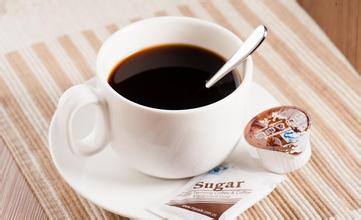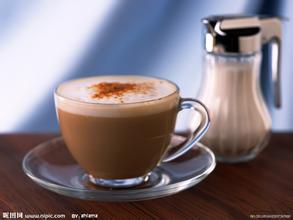Introduction to the process capacity Mode of Coffee extraction Grinding Calibration Variety treatment method
Introduction to the process capacity Mode of Coffee extraction Grinding Calibration Variety treatment method
Just imagine, boiled potatoes in a pot of boiling water, the whole potatoes, potato cubes, shredded potatoes, must be cooked first. Of course, if a whole potato is boiled, the longer it takes to cook, the more thoroughly it will be cooked. From the point of view of coffee, 10g coffee is put into 200g water, after the same time, the appropriate particle size can bring the appropriate extraction rate. Similarly, in the case of the same particle size, the extraction rate is related to the extraction time. In fact, as a flavor correction method, grinding is easy to grasp in immersion extraction. However, in pass-through extraction, many barista make mistakes in correction because of the relationship between time and extraction quantity.
For example, a store sets the extraction-18g in;36g out-based on the ebf 50% of a typical espresso. The grinding scale corresponds to the usual 28 seconds. Raise your glass and drink. Savor it carefully. The barista thinks that this cup of espresso can taste better, but the flavor may only develop to the second stage, the extraction is insufficient!
First of all: fine grinding, or 18g in,26s 27s 28s. . It will be more than 30 seconds, and the amount of extraction is less than 36g! The river was cut off in time to save the extraction time. Raise your glass and drink. Savor it carefully. Not as good as the first one! Combined with the trend of extraction time, it is considered that the extraction is excessive.
At present, the extraction principle of all Italian coffee equipment on the market is to carry out through-type extraction under pressure. In pass-through extraction, the concentration decreases with the increase of extraction time (extraction rate). Is it a bit of a mouthful here? Then imagine that if we want to maximize the extraction rate of a pressed powder to 30%, all we can do is to keep extracting until the water coming out of the handle is pure water. So, at this time, is the coffee concentration in the cup lower than the extraction rate of only 20%? On the other hand, a cup of espresso with a relatively high concentration of espresso will have a relatively low extraction rate, so our colleagues have done a very useful data collation, probably summing up the powder-to-coffee liquid ratio of a 'typical' espresso, namely ebf50%. For example: powder 18g: liquid 36g. Pay attention! It is typical of typical, not standard standard) in the reasonable extraction range of espresso-18%-22%, to ensure the complete embodiment of aroma and taste, the typical espresso,ebf can be controlled at about 50%; if it is atypical espresso, it depends on personal preference and equipment performance!
In the work, EBF can be corrected by "grinding coarse and fine grinding", "adding some powder, reducing powder", "more extraction point, less extraction point", "more water release, less water release".
EBF can help you decide when to grind, when to adjust the amount of powder, and when to control the flow of coffee.

Important Notice :
前街咖啡 FrontStreet Coffee has moved to new addredd:
FrontStreet Coffee Address: 315,Donghua East Road,GuangZhou
Tel:020 38364473
- Prev

Effect of coffee powder thickness on hand-made coffee common grinding thickness diagram
The effect of coffee powder thickness on hand brewing coffee is a good way to control bitterness, because the finer the grinding, the higher the extraction rate, the easier it is to extract high molecular weight astringent bitter substances such as chlorogenic acid, quinic acid, caffeine and carbonization. On the contrary, if the grinding is too rough, the lower the extraction rate is, the more difficult it is to extract high molecular weight astringent bitterness, but the sweet taste of middle molecular weight may also be caused by
- Next

Coffee cloth powder press what is the difference between the powder press video tutorial introduction
Coffee cloth powder press what is the difference between powder press video tutorial introduction 1, Flat: the most common powder press, the bottom is flat. 2. Euro Curve: the bottom of the powder hammer is arc-shaped, and the highest height difference at the edge of the powder hammer is 3.355MM. 3. C-Flat: it belongs to the synthesis of Euro Curve and Flat. It is not curved like the bottom of Euro, but it is like Euro.
Related
- What brand of black coffee is the most authentic and delicious? what are the characteristics of the flavor of the authentic Rose Summer Black Coffee?
- Introduction to the principle and characteristics of the correct use of mocha pot A detailed course of mocha pot brewing coffee is described in five steps.
- Which is better, decaf or regular coffee? how is decaf made?
- How much is a bag of four cat coffee?
- How about four Cat Coffee or Nestle Coffee? why is it a cheap scam?
- Which is better, Yunnan four Cats Coffee or Nestle Coffee? How about cat coffee? is it a fake scam? why is it so cheap?
- How about Cat Coffee? what grade is a hoax? which instant coffee tastes better, four Cat Coffee, Nestle Coffee or G7 coffee?
- Process flow chart of coffee making-Starbucks coffee making process what coffee tastes good at Starbucks
- The top ten best coffee beans in the world Rose summer coffee or Tanzanian coffee tastes good
- Yunnan four cat coffee is good to drink?_four cat coffee is a big brand? four cat blue mountain coffee is fake?

